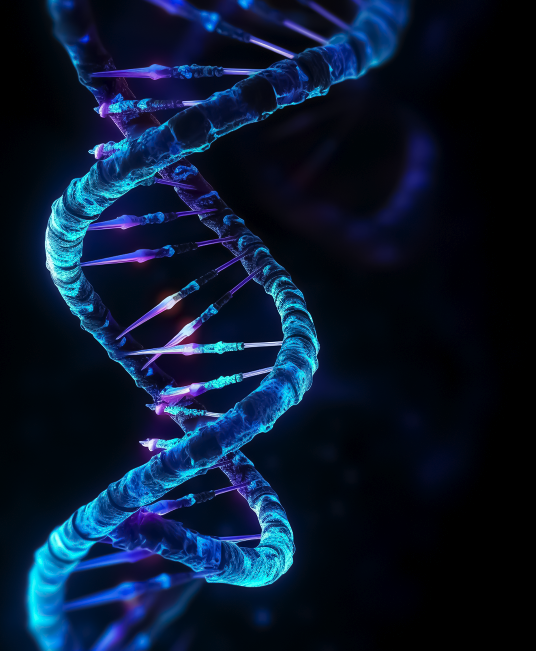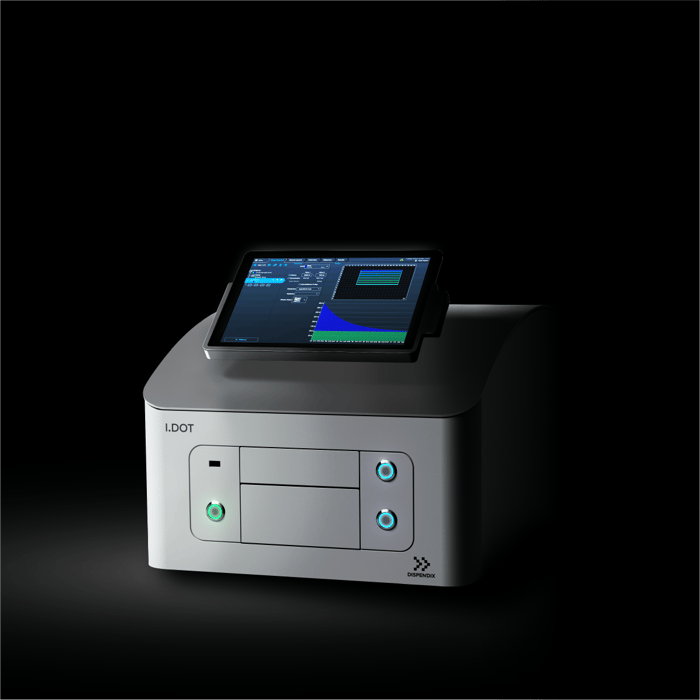Synthetic biology, also known as SynBio, focuses on the application of engineering principles to redesign, repurpose, or develop new biological systems, cells, or materials for useful purposes or to solve complex problems1.
Synthetic biology has a broad range of applications that span the fields of healthcare. SynBio is used for developing cell-based therapies, diagnostic strategies, and new antimicrobials, and industry, where biofuels, biomaterials, and chemical manufacturing processes are designed using SynBio principles. Moreover, synthetic biology is applied to environmental problems such as biosensing and remediation and developing new research tools and technologies2.
The broad array of SynBio applications requires an equally diverse suite of technologies, encompassing DNA synthesis and assembly, mathematical modeling, computer-aided design, and omics technologies2. Crafting robust synthetic biology assays necessitates a systematic and strategic approach through every phase – from design and development to optimization and validation.
Here, we explore the essential principles of an effective synthetic biology assay development pipeline, highlight vital considerations, and investigate cutting-edge assay development technologies.
The Synthetic Biology Assay Development Pipeline
The synthetic biology development process typically adheres to the design-build-test-learn (DBTL) pipeline3.
Phase 1: Design
In the initial design phase, researchers leverage their expertise to design experiments and pathways, selecting the most appropriate biological components for their project’s goals.
Phase 2: Build
Subsequently, the build phase involves the actual assembly of the system, utilizing techniques like genome editing, DNA assembly (Fig. 1), and sequencing to bring the selected elements together.

Figure 1. The build phase of the synthetic biology assay development pipeline involves the synthesis of genetic constructs through DNA assembly techniques.
Phase 3: Test
After construction, the system undergoes rigorous testing. Various assay development technologies, including microfluidics, flow cytometry, automation, and next-generation sequencing, may be employed to evaluate the system’s accuracy, precision, reproducibility, and overall robustness.
Phase 4: Learn
In this critical phase, data analysis leads to the development of optimization strategies through modeling, simulation, and redesign. The advent of assay development technologies like artificial intelligence (AI) and machine learning (ML) has significantly augmented this phase, enabling more streamlined analysis and predictive improvements.
Phase 5: Repeat
The cycle then revisits the design phase, continually refining and optimizing the system. This iterative process continues until a fully optimized, validated system can be applied to its intended purpose.
Critical Considerations of Synthetic Biology Assay Development
In addition to applying a systematic design of experiments (DoE) approach and integrating advanced assay development technology, researchers need to consider some key factors that are fundamental to the success of synthetic biology projects. By incorporating these principles, researchers can design and develop biological systems with unprecedented precision and efficiency to solve complex problems.
- Biological component selection: In synthetic biology, selecting the right biological components, such as DNA sequences, promoters, enzymes, and regulatory elements, is crucial. This selection impacts the system's functionality, efficiency, and stability4.
- Modular design principles: Modular design in synthetic biology involves creating biological systems with interchangeable parts or modules that can be easily modified, combined, or reused in different contexts. This approach enhances the flexibility and scalability of synthetic biology applications. For example, researchers applied modular design to develop artificial platelets using four functional modules5.
- High-throughput compatibility: High-throughput screening (HTS) compatibility is essential for efficiently testing and optimizing the vast number of possible combinations of biological components and conditions in synthetic biology6. Ensuring that an assay has high throughput compatibility usually requires the integration of advanced assay development technologies such as automated liquid handling and AI-assisted data analysis7,8.
Assay Development Technology
Given the multi-stage process of synthetic biology development, researchers must leverage the most advanced assay development technologies available. This can help streamline assay development, enhance precision, and accelerate the journey to groundbreaking SynBio discoveries.
Artificial Intelligence (AI)
AI plays a transformative role in synthetic biology assay development and validation. AI and ML tools can accelerate the identification of optimal conditions and configurations for synthetic biology systems through predictive analytics and modeling. They can also streamline experimental design, risk assessment, and data analysis, thus enhancing the efficiency of the development process9.
Microfluidic Devices
Microfluidic devices are useful for testing synthetic biological systems under precisely controlled environments that simulate physiological conditions and are essential for studying, mimicking, and manipulating systems' behavior over extended periods10. Additionally, microfluidic technologies support the miniaturization of assays, enhancing throughput while reducing the volume of samples needed11.
Liquid Handlers
Automated liquid handling technologies further enhance the synthetic biology assay development pipeline. By increasing throughput, these systems allow researchers to achieve higher productivity, facilitating assay miniaturization and improving the precision and accuracy of assays12. Reducing manual pipetting steps also lowers the likelihood of human error, ensuring more consistent and reliable assay results.
One such assay development technology is the I.DOT Liquid Handler (Fig. 2). With the I.DOT Non-Contact Dispenser, researchers can easily create gradients of concentrations and volumes of assay components, allowing them to systematically explore the impact of different variables on assay outcomes.

Figure 2. The I.DOT Non-Contact Dispenser enables SynBio researchers to streamline their assay development processes for rapid, reproducible, and accurate workflows.

This automated dispenser streamlines the assay development process by providing reliable and consistent dispensing, facilitating the optimization of experimental conditions, and enhancing the efficiency and reproducibility of synthetic biology assays. Book your personalized demo with a DISPENDIX representative today!
References
- Synthetic Biology. Accessed April 5, 2024. https://www.genome.gov/about-genomics/policy-issues/Synthetic-Biology
- Garner KL. Principles of synthetic biology. Essays Biochem. 2021;65(5):791-811. doi:10.1042/EBC20200059
- Kitano S, Lin C, Foo JL, Chang MW. Synthetic biology: Learning the way toward high-precision biological design. PLOS Biol. 2023;21(4):e3002116. doi:10.1371/journal.pbio.3002116
- Wang YH, Wei KY, Smolke CD. Synthetic Biology: Advancing the Design of Diverse Genetic Systems. Annu Rev Chem Biomol Eng. 2013;4(1):69-102. doi:10.1146/annurev-chembioeng-061312-103351
- Majumder S, Liu AP. Bottom-up synthetic biology: modular design for making artificial platelets. Phys Biol. 2017;15(1):013001. doi:10.1088/1478-3975/aa9768
- Kwon KK, Lee J, Kim H, Lee DH, Lee SG. Advancing high-throughput screening systems for synthetic biology and biofoundry. Curr Opin Syst Biol. 2024;37:100487. doi:10.1016/j.coisb.2023.100487
- Stevens ME, Bouchard PJ, Kariv I, Chung TDY, Oldenburg KR. Comparison of Automation Equipment in High Throughput Screening. SLAS Discov. 1998;3(4):305-311. doi:10.1177/108705719800300410
- Dreiman GHS, Bictash M, Fish PV, Griffin L, Svensson F. Changing the HTS Paradigm: AI-Driven Iterative Screening for Hit Finding. SLAS Discov. 2021;26(2):257-262. doi:10.1177/2472555220949495
- García Martín H, Mazurenko S, Zhao H. Special Issue on Artificial Intelligence for Synthetic Biology. ACS Synth Biol. 2024;13(2):408-410. doi:10.1021/acssynbio.3c00760
- Damiati LA, Damiati SA, Damiati S. Developments in the use of microfluidics in synthetic biology. In: New Frontiers and Applications of Synthetic Biology. Elsevier; 2022:423-435. doi:10.1016/B978-0-12-824469-2.00025-7
- Ferry MS, Razinkov IA, Hasty J. Microfluidics for Synthetic Biology. In: Methods in Enzymology. Vol 497. Elsevier; 2011:295-372. doi:10.1016/B978-0-12-385075-1.00014-7
- Ortiz L, Pavan M, McCarthy L, Timmons J, Densmore DM. Automated Robotic Liquid Handling Assembly of Modular DNA Devices. J Vis Exp. 2017;(130):54703. doi:10.3791/54703